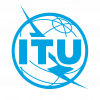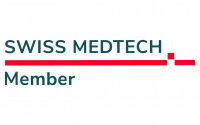BLOG
Telecom26 blog
Smart Cities and IoT are already improving life in many of the world’s cities. Telecom26’s Global SIMs are at the heart of our IoT Service.

Traffic management was one of the early Smart City initiatives including smart parking meters and apps that identify empty parking bays and analysing traffic flows so that smart traffic lights can be altered accordingly.
Smart City World is packed full of interesting IoT initiatives from around the world.
This story caught our eye last year Can smart lampposts help stop the spread of Covid-19?
No longer is a street light just for showing us the way…“The latest generation lamp columns go beyond street lighting by incorporating sensors that can receive and transmit information about crowd density, and even the body temperature of individuals. They can also incorporate CCTV, air quality sensors, flooding monitors, digital signage, and 5G wifi hotspots”.
In fact, the city of Barcelona has developed a camera-based solution attached to lampposts so that it can monitor how busy its lovely beaches are - and implement crowd control measures to enable social distancing. To complement this, temperature sensors can also be mounted on a lamppost.
Whilst in “Los Angeles, which already has 400 smart street lights, equipped with electronic vehicle chargers, the city is looking to pilot air quality sensors, fire spotters, gunshot locators and earthquake sensors”.
Of course, wherever a sensor is attached to a device then connectivity is needed so that the information gathered can be transmitted back for analysis and action. And, in the case of smart traffic lights, two-way connectivity is required so they can be controlled remotely.
And it’s not just cities that are actively deploying and embracing IoT. In this earlier blog The rollout of enterprise IoT networks - lots of optimism from analysts we looked at two analyst reports which are upbeat: “The overall feeling about the future of IoT is optimistic as the technology matures and more projects are deployed within enterprises”.
IoT, Sensors, Mass Market - and the need for ready-to-go connectivity
One issue that will need addressing as Smart City technologies are adopted is the need to standardise components. To take Barcelona’s smart lamp posts as an example. The CTO for the city will chose their preferred local operator to provide connectivity to the lamp post for the one SIM in each sensor. However, when the technology is commoditised and manufactures or suppliers or integrators want to ship turnkey solutions to cities around the world, the SIMs will need to be integrated into the sensor.
Enter Telecom26’s Global SIM cards which can connect to 1100+ cellular networks belonging to 650+ unique mobile operators in 200+ countries and territories. Problem solved.
Telecom26 and IoT Connectivity
As a global mobile connectivity provider, Telecom26 is helping with the rollout of IoT networks across a range of vertical markets. You can read more in these previous blogs:
IoT SIM Card - One SIM, One Supplier, Multiple Networks for IoT devices
At the heart of Telecom26’s IoT service are our global eSIMs and physical SIM cards. One of our SIMs in an IoT device provides access to all of the networks covered by our global roaming service. That’s 1100+ cellular networks belonging to 650+ mobile operators in 200+ countries.
Our global SIMs remove the need to worry about the coverage of a single MNO, or the existence of roaming alliances. They automatically select the best performing network in the area, cross-border, while providing enterprises with the freedom to change SIM profiles and services with ease.
We can also customise our offering, and build routing profiles for each IoT device according to a customer’s needs and budget. For example, for organisations that are more price sensitive we can ensure that our Global SIM cards automatically connect to the cheapest service in the area, rarely access expensive satellite links - and make the most of wifi for data-heavy up and downloads.
In a nutshell, Telecom26 enables data connectivity, anywhere - so that your IoT device can connect to the best available network, regardless of location.
We offer a full range of connectivity options including 5G, LTE, WiFi, private networks, 2G, 3G and 4G, as well as offshore connectivity capabilities.
So if you’d like to find out more about our IoT SIM cards and how Telecom26 can help improve IoT connectivity and the global connectivity service used by your device, then please contact us.
Better still. How about an IoT trial? Contact us here to chat about what you’re looking for.
And, of course, we’ll be at the next global must-attend event of the year, Mobile World Congress in Barcelona 28 Feb - 3 March in Hall 7, Stand 7G10 if you’d like to meet up in-person to discuss your IoT Connectivity and other connectivity needs, please contact us.
Telecom26 is a full operator member of the GSMA and the ITU.



